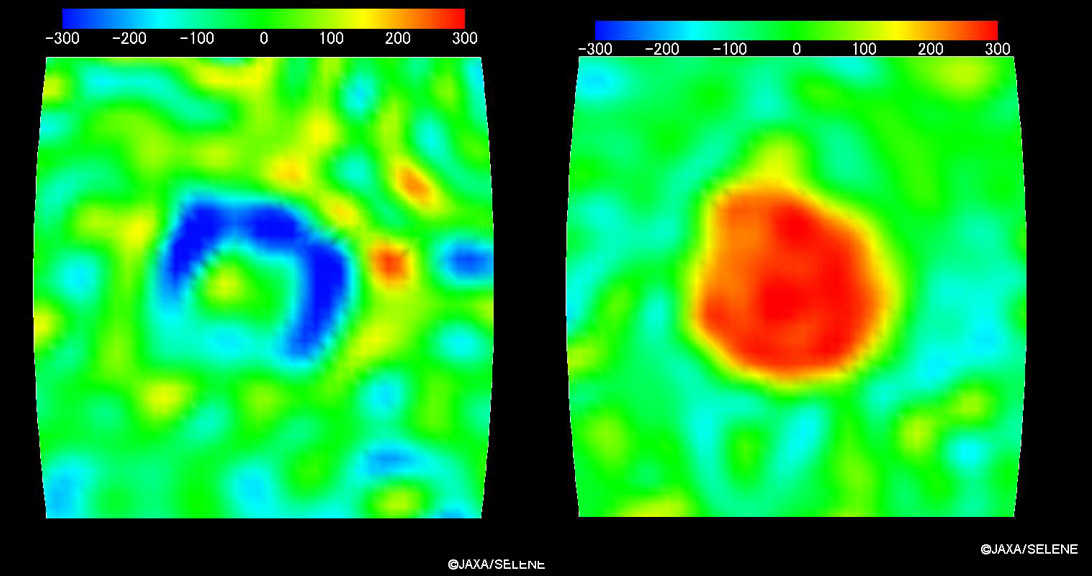October 2, 2008
Farside Lightness

gravity maps from Kaguya Image Gallery (select the 2008/09/16 item)
A pundit once said that a characteristic of great science projects is discovery of totally unanticipated phenomena. The lunar exploration of the 1960s had many examples of that, including the discovery of gravity anomalies over circular impact basins. These were almost all excesses of gravity or mass concentrations (mascon). The Serentitatis Basin (right) is a bright red circle, where red indicates a mascon, as is Imbrium, Crisium, Nectaris and Humorum. Mascons were discovered by tracking the orbital paths of the Lunar Orbiter and Apollo spacecraft. When they flew over an area where gravity was stronger they would drop closer to the lunar surface. The explanation that developed for mascons is that at the end of a basin-forming impact part of the lunar mantle rebounded into the lunar crust. Mantle rocks are denser than crustal rocks, accounting for the excess mass compared to areas beyond the basin where the crust was undisturbed. Another contributor to the excess mass is probably the dense mare lavas that fill nearside basins. Determination of gravity anomalies for the farside was previously difficult since spacecraft could not be tracked from Earth when they were back there. But the Japanese Kaguya mission includes Okina, a separate little satellite that orbits such that either it or Kaguya itself is always in sight of Earth, and each other. Thus, they can provide precise tracking information to map farside gravity. A new discovery is that the farside basin Apollo has a very different gravity anomaly (left). For Apollo there is a annular negative anomaly (blue) surrounding a more positive center (yellow) and the blue is in turn circled by a ring of positive gravity (more yellow). I wish this map had a longitude-latitude grid or was superimposed on an topographic image so that it would be easier to tie the gravity to the surface features. Apollo has a small pond of mare in its center (the yellow) surrounded by a zone of possible older, light-hue lava just inside the rim - perhaps that is the blue. Kaguya scientists imply that such negative anomalies are common on the farside, which is in agreement with previous US work showing similar negative rings around Orientale, Humboltianum, Schrodinger, Hertzsprung and Apollo itself. These new improved Kaguya gravity maps will permit more intensive study of the origin of gravity anomalies associated with basins. Two ideas jump to mind. Farside basins have far less lava fill than nearside basins, reducing mascons. And perhaps the mantle is deeper beneath the surface than on the nearside - that would be an intriguing hypothesis to explore!
Chuck Wood
Yesterday's LPOD: Phases Rap
Tomorrow's LPOD: Ups And Downs
COMMENTS?
Register, Log in, and join in the comments.



